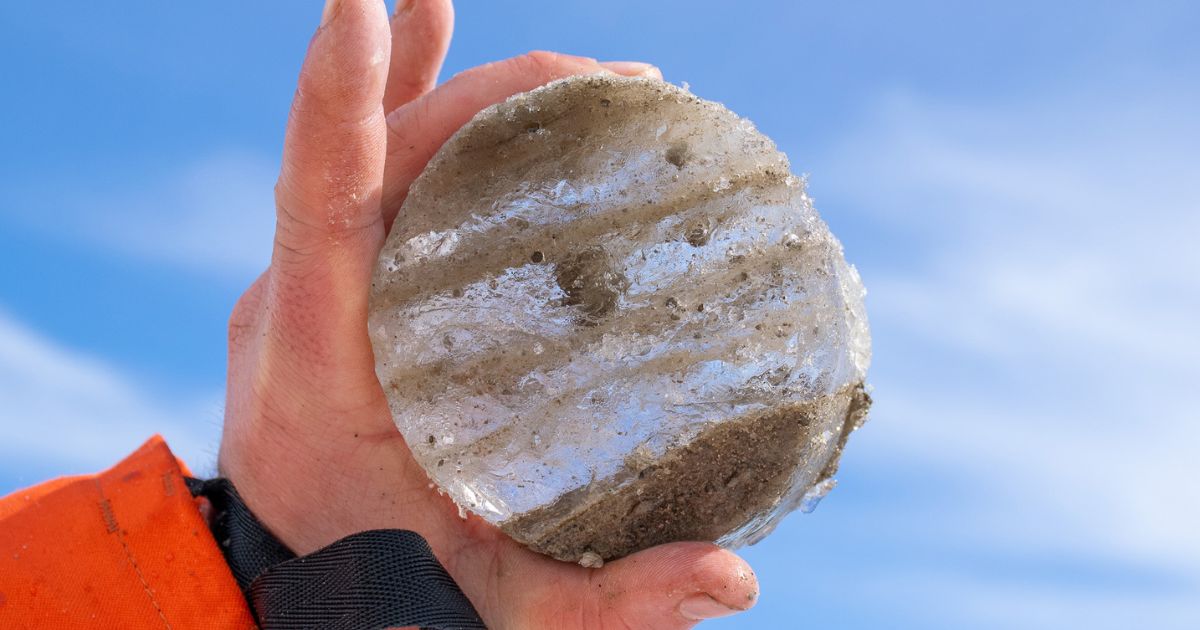Three expeditions with the German research icebreaker POLARSTERN will improve the scientific understanding of feedbacks between ice, ocean and atmosphere in East Antarctica.
The ice in this region stores water masses that could cause a sea level rise of dozens of meters over centuries of global warming. The two current expeditions are led by researchers from Kiel: Dr. Marcus Gutjahr from GEOMAR Helmholtz Centre for Ocean Research Kiel hands over to Professor Dr. Sebastian Krastel from Kiel University at the beginning of February. The expedition, which is now coming to an end, brought valuable new findings and data—but was also characterized by worrying observations.
When the German research icebreaker POLARSTERN calls at Hobart in the Australian state of Tasmania for the first time, there will also be a handover of the scientific leadership between two researchers from Kiel in Northern Germany: For Dr. Marcus Gutjahr, geochemist at GEOMAR Helmholtz Centre for Ocean Research Kiel, an extremely successful two-months long expedition to the East Antarctic Ice Sheet comes to an end. Professor Dr. Sebastian Krastel, geophysicist at Kiel University (Christian-Albrechts-Universität zu Kiel, CAU), takes over as chief scientist. The two expeditions are part of a research program on East Antarctic Ice Sheet Instabilities (EASI).
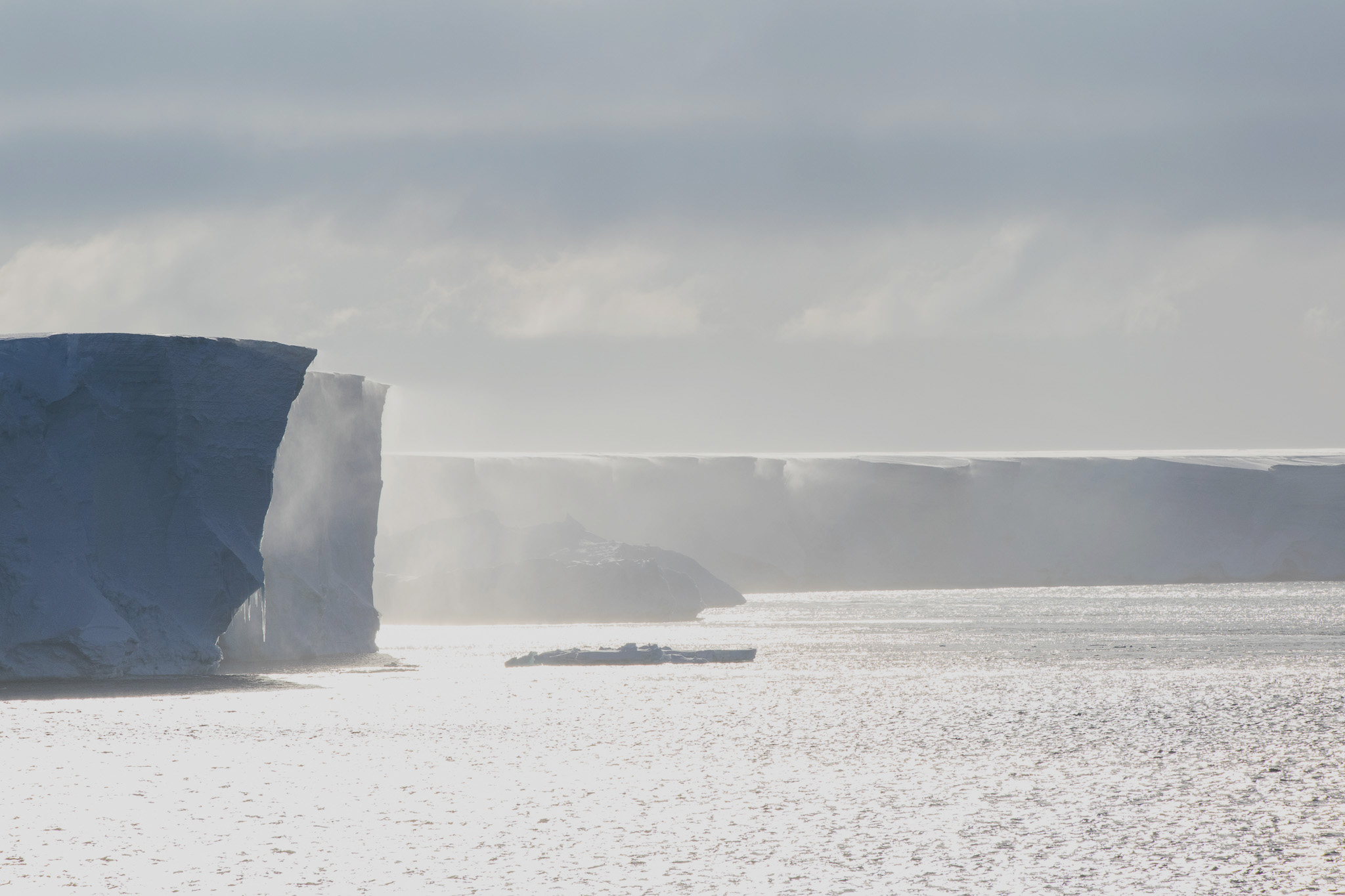 View of the Amery Ice Shelf. The ice in East Antarctica stores water masses that could cause sea levels to rise by dozens of meters over centuries as global warming progresses. (Image credit: Marcus Gutjahr, GEOMAR)
View of the Amery Ice Shelf. The ice in East Antarctica stores water masses that could cause sea levels to rise by dozens of meters over centuries as global warming progresses. (Image credit: Marcus Gutjahr, GEOMAR)
The three EASI expeditions aim to investigate feedbacks between ice, ocean and atmosphere in the East Antarctic, an important region for the global climate system and sea levels. The ice sheet on the continent can be up to several kilometers thick. It stores masses of water that could cause sea levels to rise by dozens of meters over the course of centuries. It is therefore important to better assess its future development. The first EASI expedition took place at the beginning of 2022 under the leadership of the Alfred Wegener Institute, Helmholtz Centre for Polar and Marine Research (AWI). Dr. Marcus Gutjahr was already on board at that time.
Disappearing Ice and Changing Current Systems
In Prydz Bay on the Amery Ice Shelf, the researchers experienced surprisingly ice-free conditions at the turn of the year 2023/2024. “Almost the entire Prydz Bay was free of sea ice, much less than the average of the past four decades. Only the south-easternmost part was an icy landscape, as you would imagine in the Antarctic,” reports Dr. Marcus Gutjahr. “Our measurements in the 150-kilometer-wide bay showed that the surface temperatures were far above the freezing point of salt water. While the deeper water layers had characteristically cold temperatures below minus 1.8 degrees Celsius, the regional surface water was significantly warmer.”
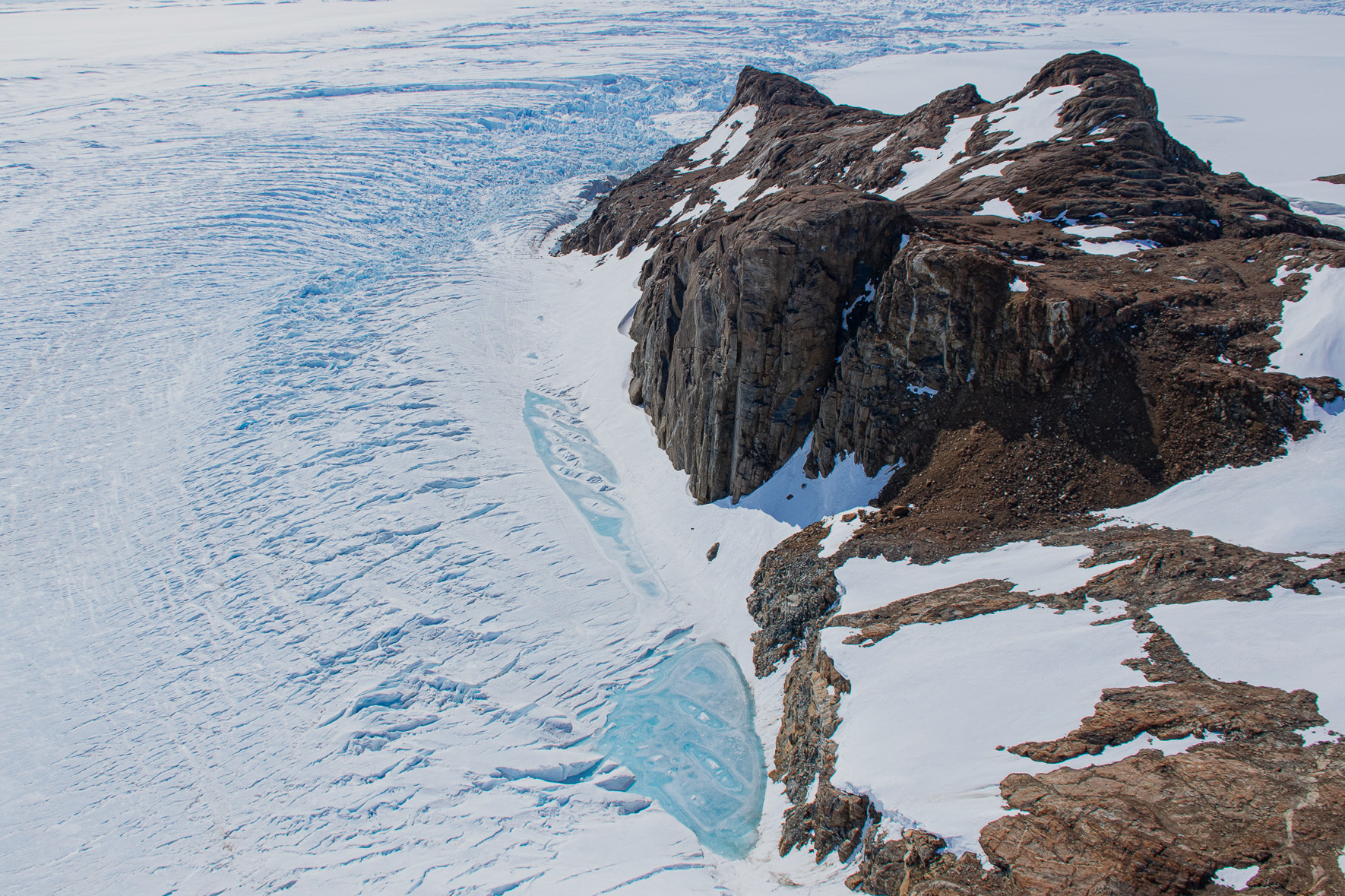 On shore, the researchers collected samples for analyses and experiments. (Image credit: Marcus Gutjahr, GEOMAR)
On shore, the researchers collected samples for analyses and experiments. (Image credit: Marcus Gutjahr, GEOMAR)
Over Christmas, echo sounder measurements also provided the geologists on board with new images of the topography of the seabed in the region. They showed clear traces of glacial erosion from past cold periods. The measurement results also differed significantly from previous visualizations, which were based on satellite data. The new insights will help to improve internationally authoritative maps. Researchers visited the coast using the POLARSTERN's on-board helicopter to collect samples of ice, sediment and rock for analyses and experiments. For example, GEOMAR scientists will investigate the weathering of this particularly pure rock and assess the trace metals lead and iron it contains.
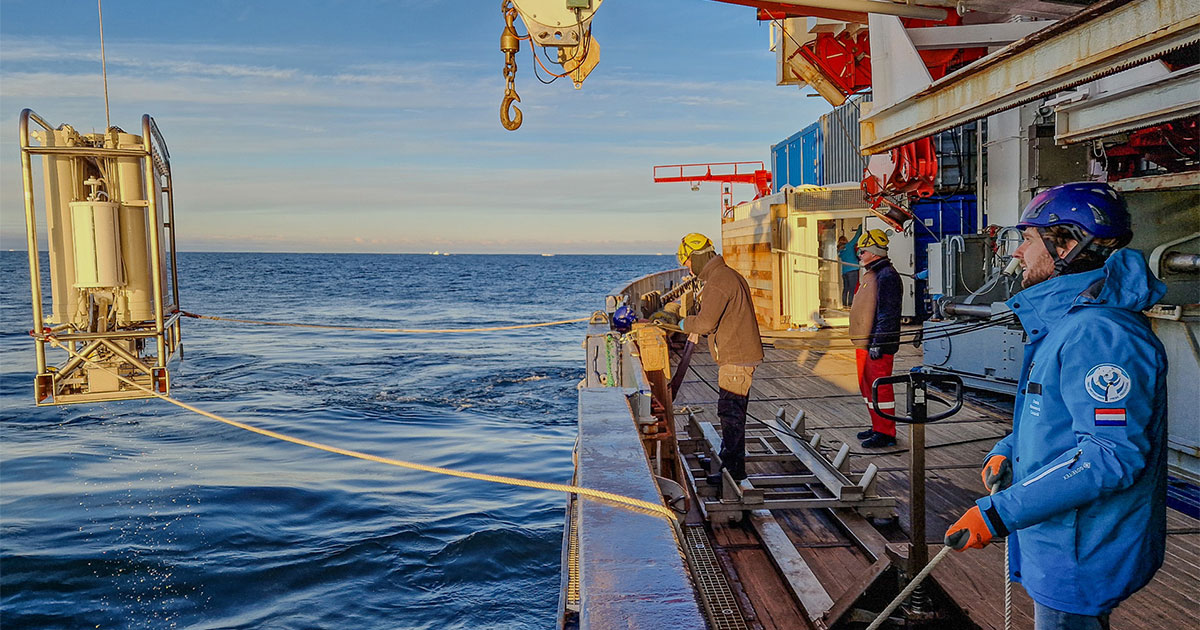 Measurements and samples show the concentrations of trace metals in the water of the Southern Ocean. (Image credit: Marcus Gutjahr, GEOMAR)
Measurements and samples show the concentrations of trace metals in the water of the Southern Ocean. (Image credit: Marcus Gutjahr, GEOMAR)
Another important target was the Denman Glacier, which received sad attention in publications and media reports due to its exceptionally rapid melting. “Our data confirms previously published data. We can clearly see that the glacier is melting below the sea surface and will therefore retreat further inland,” the chief scientist summarizes his initial impressions.
On the return journey towards Australia, the researchers tracked changes in temperature and salinity at different water depths as well as concentrations of trace metals by taking samples and measurements every 100 nautical miles. “This allows us to characterize the chemical composition of the water and the origin of the water masses very well. We are excited to see how pristine the composition of the water here still is,” explains Dr. Marcus Gutjahr. Sediment cores were also extracted from the seabed at almost all water stations for comparison—they contain deposits that allow for a look back into the geological past. The contrast between past and present reveals how quickly climatic changes affect ocean currents. “The circulation of the Southern Ocean always adapts to the prevailing climate. The pressing question now is how quickly it reacts to the current global warming and can thus influence the global exchange of water masses.”
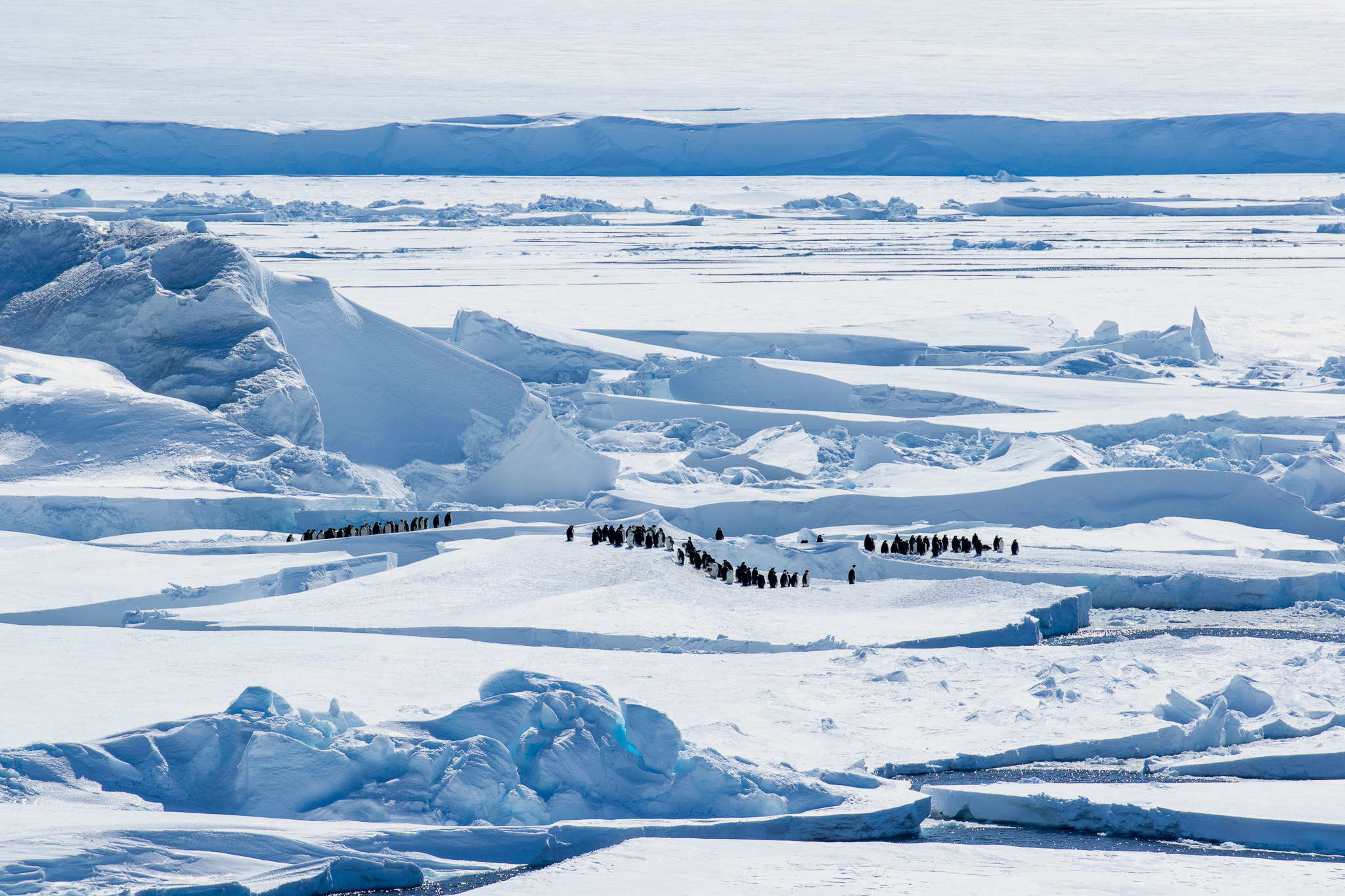 Only a few areas of Prydz Bay showed an icy landscape as expected in Antarctica. (Image credit: Marcus Gutjahr, GEOMAR)
Only a few areas of Prydz Bay showed an icy landscape as expected in Antarctica. (Image credit: Marcus Gutjahr, GEOMAR)
A Look into Earth's history
The EASI-3 expedition, which is starting now, focuses on past ice sheet changes in East Antarctica. So far, little is known about the reaction of the East Antarctic Ice Sheet to climate change, especially at the ocean-continental boundary. There is still insufficient data on the morphology of the ice shelf in this region. The cruise, led by Kiel University, will therefore obtain new geological and geophysical data and samples that provide insights into the various states of past ice sheets. For example, it was warmer in the Pliocene about three to five million years ago than it is today. The researchers hope that the new data will allow them to draw conclusions about the quantification of ice sheet behavior during this period, among other things.
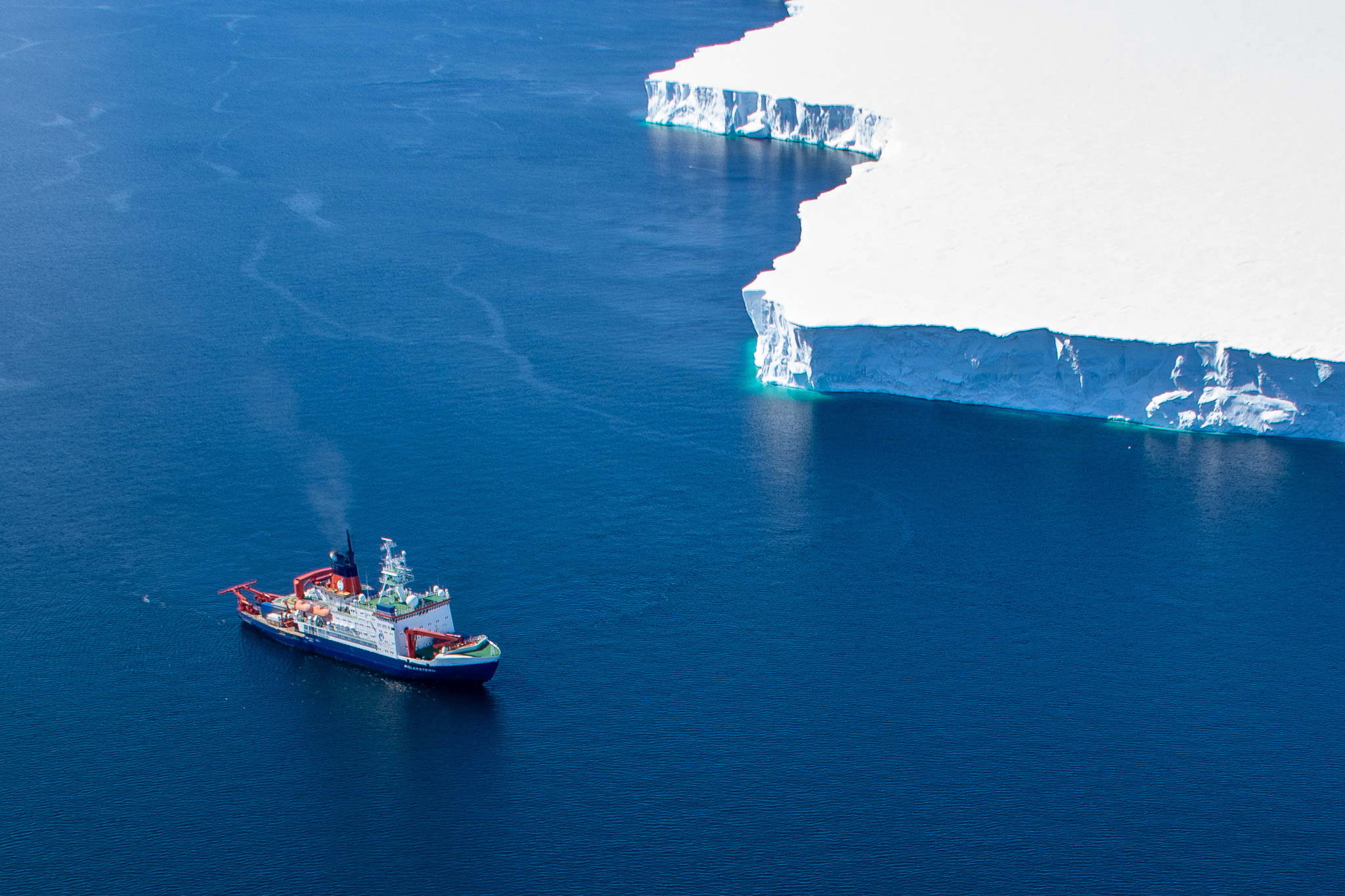 Research icebreaker POLARSTERN at the Denman Glacier. (Image credit: Marcus Gutjahr, GEOMAR)
Research icebreaker POLARSTERN at the Denman Glacier. (Image credit: Marcus Gutjahr, GEOMAR)
“With geophysical measurements in the ocean and on land, we can look far back into the Earth's history. By combining different geophysical systems, we are able to map structures at different depths with the best possible resolution. This allows us to look up to 1,000 meters into the seabed. Our aim is to identify characteristic structures that provide us with information about the climate and the nature of the ice sheet in the distant past,” explains geophysicist Professor Dr. Sebastian Krastel. In addition to the marine investigations in the open ocean, the EASI-3 expedition will also carry out land-based sampling of the continental shelf and coastal lagoons and lakes. EASI-3 will end in Walvis Bay, Namibia, in mid-April.
First Call in Australia
At the end of the EASI-2 expedition, POLARSTERN arrived in Hobart, Tasmania, on January 30, 2024. To mark the first call, the German embassy in Australia invited personalities from politics, science and society to a festive reception on board. The public can find out more about the polar research of the Alfred Wegener Institute and its partners in a multimedia exhibition in the city center, which is being organized jointly with the city of Hobart and the research institutes based there. There will also be a panel discussion, which will kick off a series of Climate Talks organized by the German Embassy in Australia, as well as exchange meetings with scientific institutions and political interest groups.
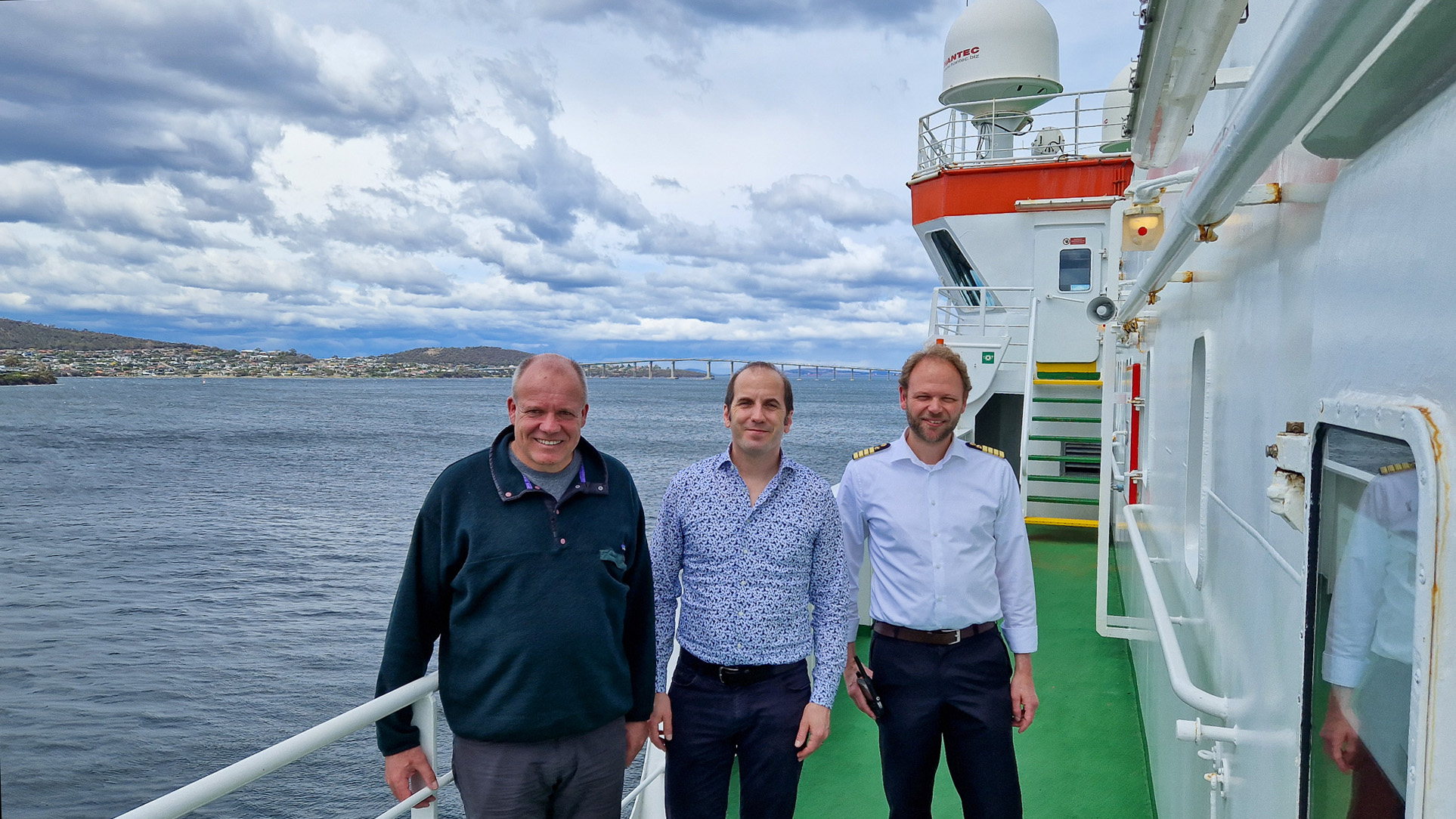 Professor Dr. Sebastian Krastel (Christian-Albrechts-Universität zu Kiel, CAU), Dr. Marcus Gutjahr (GEOMAR Helmholtz-Zentrum für Ozeanforschung Kiel) and POLARSTERN Captain Felix Lauber in Hobart. (Image credit: David Menzel, GEOMAR)
Professor Dr. Sebastian Krastel (Christian-Albrechts-Universität zu Kiel, CAU), Dr. Marcus Gutjahr (GEOMAR Helmholtz-Zentrum für Ozeanforschung Kiel) and POLARSTERN Captain Felix Lauber in Hobart. (Image credit: David Menzel, GEOMAR)
The EASI expeditions are part of the Helmholtz Association’s program-oriented funding (PoF) in the research program “Changing Earth - Sustaining our Future,” in which AWI and GEOMAR are involved. For Kiel University, the expeditions provide important impetus for research within the university’s research focus Kiel Marine Science (KMS). The researchers are funded by the priority program “Antarctic Research” of the German Research Foundation (DFG), among others.


